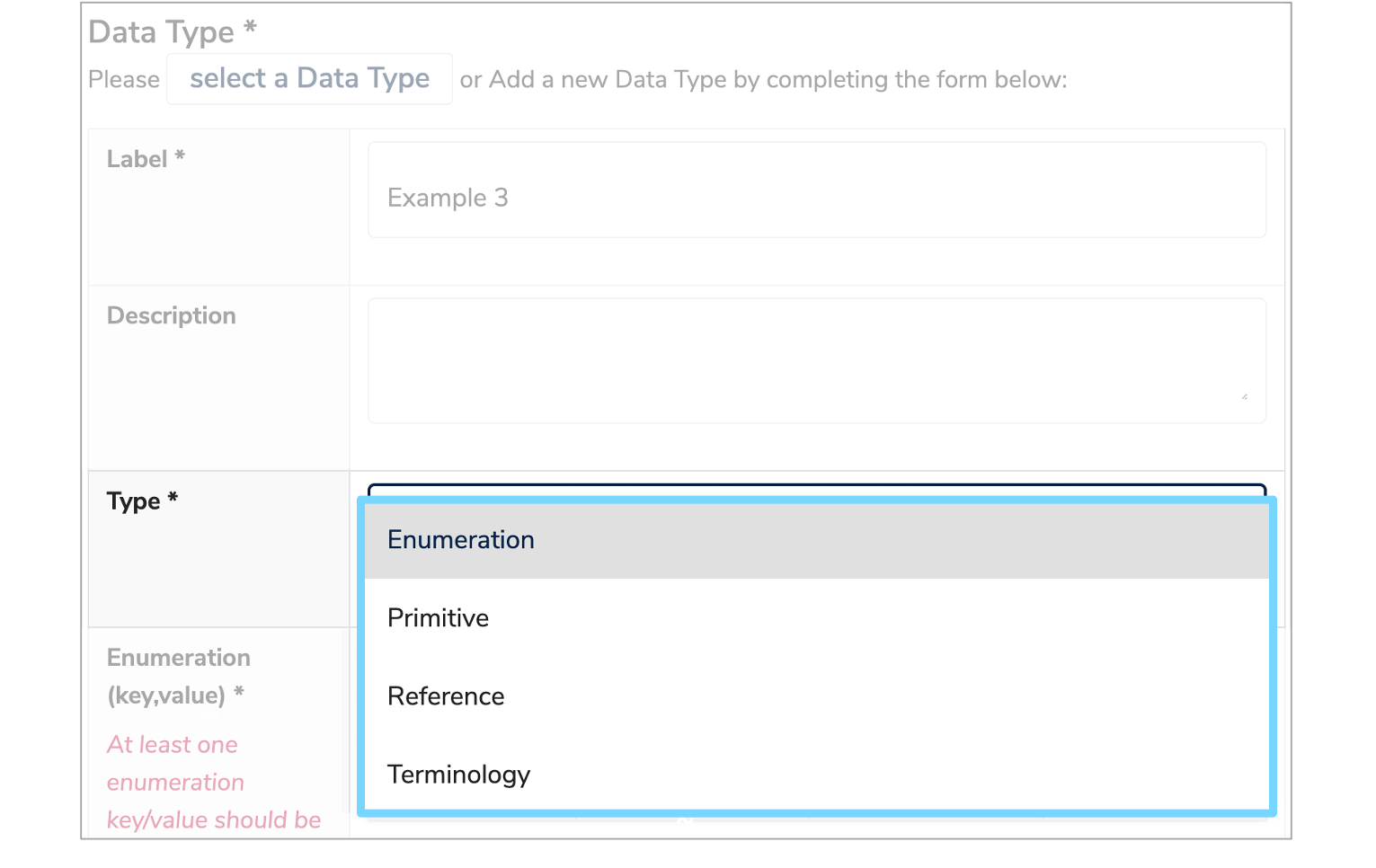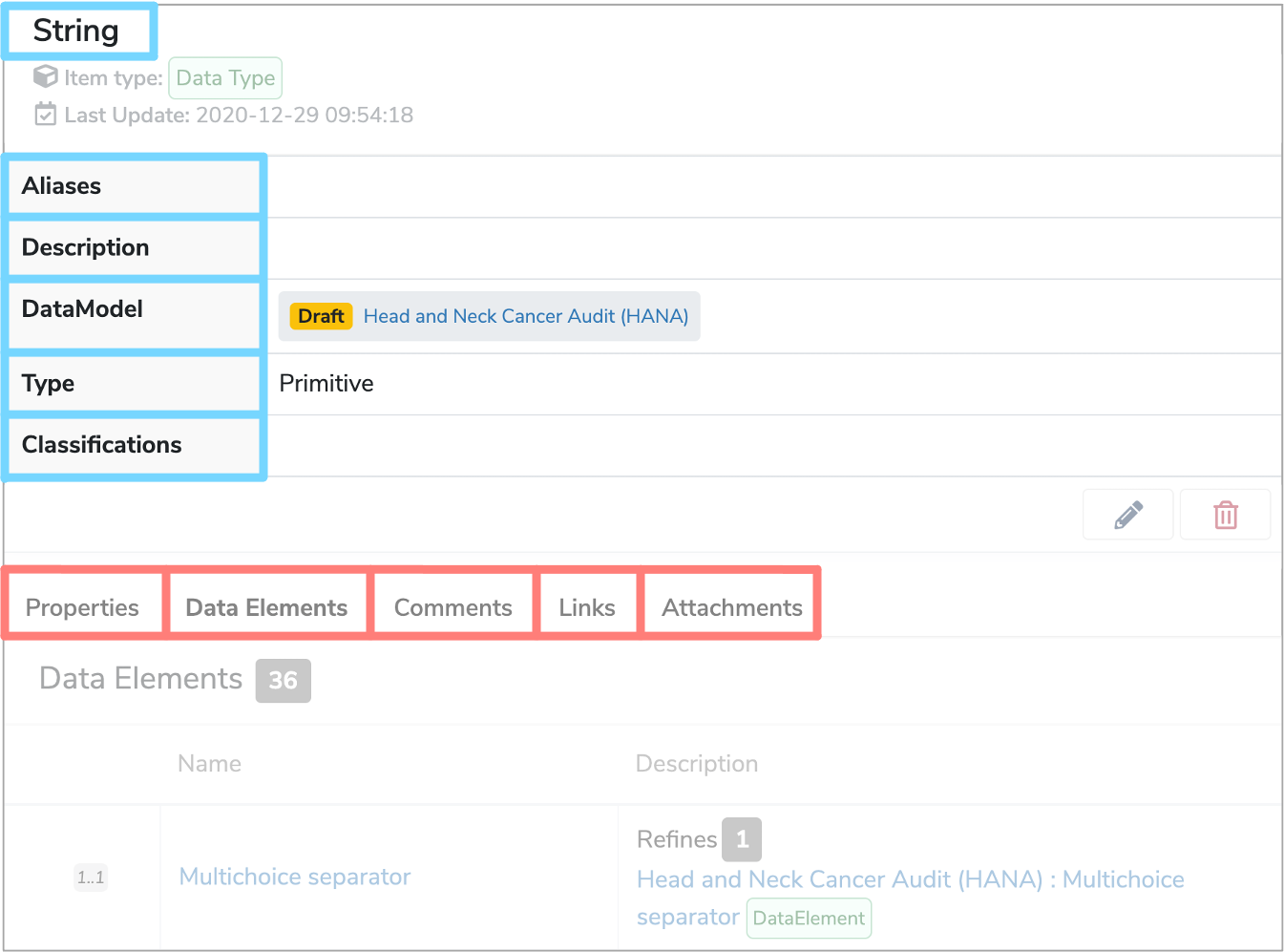Data Type
What is a Data Type?¶
A Data Type describes the range of possible values that each Data Element may take.
How are Data Types used?¶
There are four different Data Types stored within Data Models of Mauro Data Mapper:
-
Enumeration Data Type
This is a constrained set of possible Enumeration values, which are typically used to describe lists of data.
For example, an ethnicity Enumeration Data Type would include a list of different ethnic categories, each defined by a coded key and a human readable description. -
Primitive Data Type
Data without further details on structure or referencing. Primitive Data Types include ‘String’, ‘Integer’ or ‘Date’. -
Reference Data Type
Data which refers to another Data Class within the same Data Model. -
Terminology Data Type
A structured collection of Enumerated Values which have relationships between different data terms.
When adding a new Data Type to a Data Element, you will need to select the relevant Data Type from the dropdown menu on the 'Data Element Details' form. For more information on how to do this, go to step '5.1 Add Data Elements' on our Document a Health Dataset user guide'

Each Data Type has a:
-
Label
This is the unique name of the Data Type. -
Aliases
Alternative names that can help locate the Data Type when searched for. -
Description
A definition written in either html or plain text which explains any contextual details relating to the Data Type. -
DataModel
The Data Model that the Data Type belongs to. -
Type
The Data Type (Enumeration, Primitive, Reference or Terminology). -
Classifications
These are effectively tags that you can apply to the Data Type.

Other characteristics are displayed in the tabs underneath the details panel, when the Data Type is selected in the Model Tree.
-
Properties
Arbitrary additional metadata about this Data Type. -
Data Elements
The Data Elements that use the selected Data Type. -
Comments
Any relevant comments or notes. -
Links
Semantic links between relevant Data Types. -
Attachments
Files can be added to provide additional information and context.